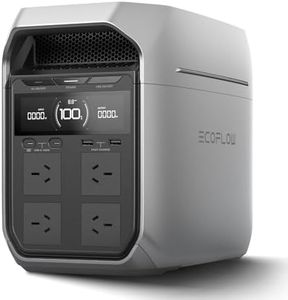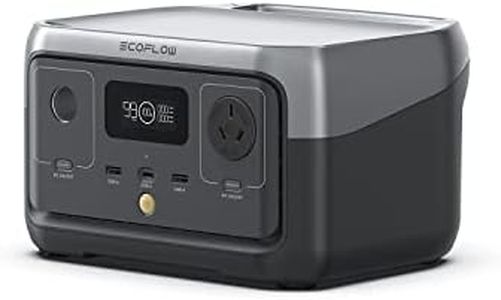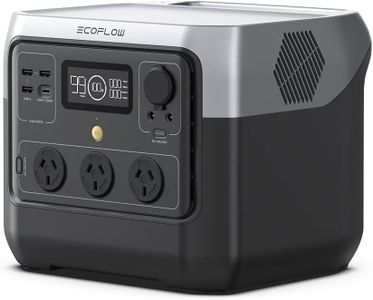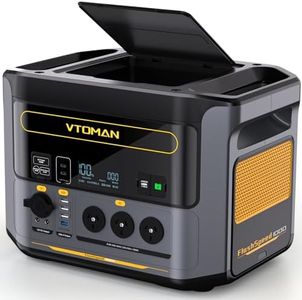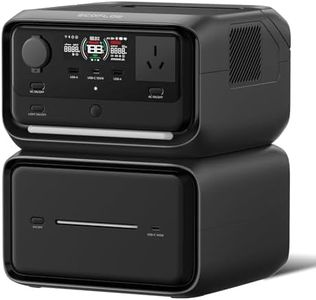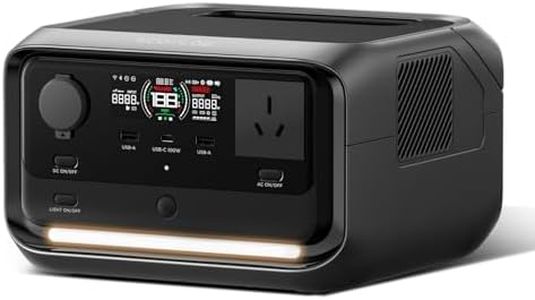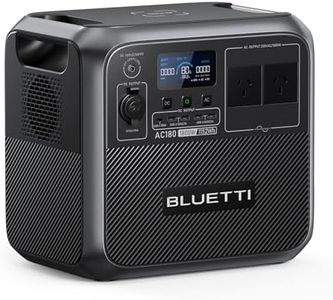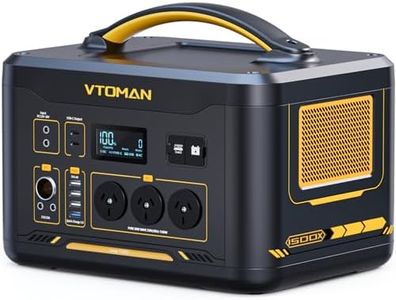We Use CookiesWe use cookies to enhance the security, performance,
functionality and for analytical and promotional activities. By continuing to browse this site you
are agreeing to our privacy policy
10 Best Portable Power Stations
From leading brands and best sellers available on the web.Buying Guide for the Best Portable Power Stations
Choosing a portable power station is all about matching your needs for energy storage, portability, and capability. These devices are useful if you need backup power for home emergencies, camping trips, or to keep your devices running when you’re off the grid. Start by thinking about what you want to charge or power. Are you looking to keep a phone running, or do you need to power larger devices like mini fridges and laptops? Knowing your main use case will make it much easier to decide which features and sizes to prioritize.Battery Capacity (measured in Watt-hours, Wh)Battery capacity tells you how much energy the power station can store, which is crucial for determining how long it can run your devices before it needs to be charged. Lower capacities (under 300 Wh) work well if you only need to charge small devices like phones and headlamps. Medium capacities (300-700 Wh) can handle more devices or larger devices like small fans or tablets, while high capacities (over 700 Wh) are better for longer trips or heavier use such as running laptops, mini fridges, or more demanding equipment. To decide, think about the combined power needs and the duration you want to run things between charges.
Output Ports and TypesThe output ports determine what kinds of devices you can plug into your power station, such as USB, AC outlets (like a regular wall plug), or DC car outlets. A unit with just a few USB ports is fine for charging phones and small gadgets. If you plan to run items that need a regular plug or multiple devices at once, look for a station with several types of ports and possibly more than one AC outlet. Write down what you’ll need to power and compare with the available ports on the models you’re considering.
Portability (Weight and Size)How portable a power station feels depends on its weight and physical size. Lighter, more compact units are great for backpacking or situations where you’ll carry it by hand for long distances, but they generally have lower capacity. Heavier, bulkier units will store more energy and handle more devices but are better suited for car camping or emergency home use where you don’t need to move the station much. Think about how far you’ll need to carry it and how much space you have to store it.
Charging Options and TimeThis refers to how you recharge the power station itself (for example via wall plug, USB-C, solar panel, or car outlet) and how long it takes to fully recharge. Some stations support fast charging or allow you to use multiple methods at once. If you plan to use solar panels for recharging while off-grid, check compatibility with solar input. If you often need to recharge quickly between uses, pick a unit with faster charging or versatile input options.
Power Output (Wattage)Power output, usually measured in watts (W), tells you how much power you can draw at one time. A station with low max output (up to 150W) is best for just phones and lights. Mid-range output (150-500W) lets you run small appliances and laptops, while high output (over 500W) is needed for devices that draw a lot of power, like blenders, desktops, or medical equipment. List your most powerful device, check its wattage, and make sure the power station exceeds this number.
Safety and Protection FeaturesMany portable power stations include safety mechanisms such as overcharge, short circuit, and temperature protection to keep you and your devices safe. If you’ll use the station in varying weather conditions or for sensitive electronics, prioritize models with strong built-in protections. Look for details about certification or safety systems to help you feel confident about reliability.



